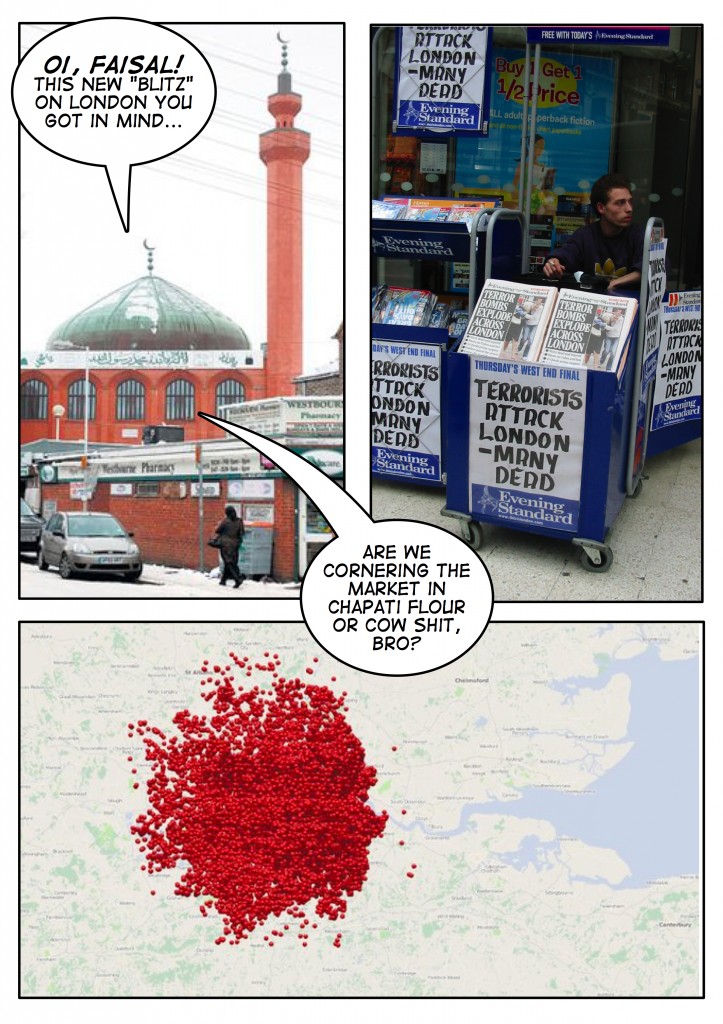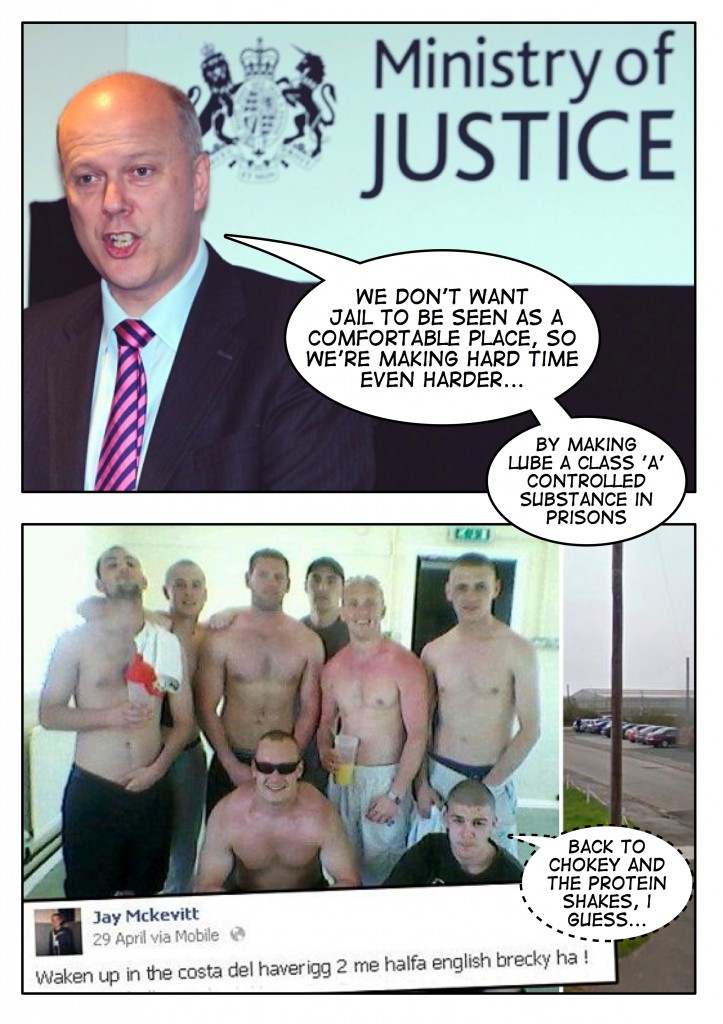Today, as promised, I’m going to talk about Sandy Hook Elementary. I’m also not going to provide you with any easy answers or solutions.
This means that if you don’t want to acknowledge the grim reality that public policy is hard, stop reading now lest you get to the end of this piece and find that I’ve made you miserably unhappy and that you therefore wish to abuse me. This post is the first of two; the next one will go up when I have some more information about a crucial aspect of the investigation as it unfolds.
I ended my last piece on 2DayFM’s prank gone wrong with Charlie Brooker’s plea to report spree killings differently, so I’ll start this one on the same theme: the spectacle.
This comes from Plato’s Republic:
Leontius, the son of Aglaion, was coming up from the Peiraeus, close to the outer side of the north wall, when he saw some dead bodies lying near the executioner, and he felt a desire to look at them, and at the same time felt disgust at the thought, and tried to turn aside. For some time he fought with himself and put his hand over his eyes, but in the end the desire got the better of him, and opening his eyes wide with his fingers he ran forward to the bodies, saying, ‘There you are, curse you, have your fill of the lovely spectacle’.
Nearly everything in Plato’s Republic is A-Grade bunkum, but that insight is a telling one. Charlie Brooker calls it ‘rubbernecking’ and anyone who’s ever slowed down to gawp at an RTA or wondered what the Romans got out of their incredibly violent entertainments or played Call of Duty or obsessively tried to learn more about the latest school shooting understands the desire that got the better of Leontius. Violent death. It’s just so interesting, dammit. And these days, we know that it’s not just our eyes that want to look. We do, too. Plato thought that ideal versions of everything existed out there in the ether–he called them ‘forms’. But there are no forms, or if there are, they exist not in the stars but in our heads. Just like the rubbernecking habit.
This means that any discussion of Sandy Hook–here or elsewhere–is in some respects voyeuristic. We are perving on other people’s grief, and that’s not an attractive habit. I find it revealing that the two commentators who made the ‘grief’ point in the most lapidary fashion represent political extremes. Here is socialist Guy Rundle, in Crikey!:
Too calm, too practised. They are too good at this now. There is too much stricken meditation on the unknowable nature of evil, too much “this is not a day for politics”, too much coming together, too much spirituality that is really passivity with a gloss, too many candles, too many floating lanterns. These things have become as polished and inverted in intent as teen funerals with their slideshow montages to Time of Your Life.
There’s something nauseating about such forbearance. The systematic and thorough killing of 20 children under seven should not be an occasion for which anyone is sufficiently prepared. By its very nature, it should be an occasion for hysteria, for disarray, for uncontrollable grief.
[...]
The meditative reflection on display strikes one as a particular condition of a more general process — the manner in which a type of fatalism has encroached on daily life at the very root — in America. Though expressed in religious terms, it seems to have more to do with the all-encompassing power of abstract systems, corporations, processes, a life lived in permanent suspension from the real.
“We need to take action,” the superintendent had said in Bridgeport and I brightened for a moment. “We need to take action to comfort, action to be vigilant.” Which is not action at all, but its opposite.
And here is paleolibertarian Ilana Mercer:
Almost as warped as the (evil, not ill) mass murderer who killed 20 children and 7 adults (his mother included) at an elementary school in Newtown, Conn., is the freaky spectacle of mass contagion—where members of the public turn professional mourners, flocking to funeral happenings for victims they never knew.
Yes, each one of us can project his own baggage onto the senseless deaths in Newtown. But grief is not a tribal affair. Communities don’t grieve; individuals who incur loss do. These ritualistic displays among regular folks across the US are symptomatic of our festering cultural commons. [Emphasis in original]
At the center of this festering culture is the journalist, acting as a master of ceremonies (MC). (I can see Anderson Cooper reconfiguring his Hero of the Year Award as we speak. This low-watt, dim bulb of a journo chooses America’s heroes each year, based on how many tears they shed. Pretty much.) For the media’s blow-by-blow, wall-to-wall coverage of the memorial in Newtown, Connecticut—and of every connected utterance on the issue, official or other—is a deconstruction of the discipline of journalism.
So–that acknowledgment of our devotion to the spectacle over–it’s time to address a few (and it is only a few, because life is too short) of the early stage explanations for Sandy Hook, and to put them out of their misery.
It was the guns what done it!
I’m about to make both pro and anti-gun friends very unhappy (so you have been warned), but this lawyer with a modicum of statistical understanding is heartily sick of both sides abusing the numbers.
First, some background radiation to what I’m about to say.
The United States is, compared to OECD averages, a phenomenally violent country. And within the US, the South has levels of violence on par with much of the developing world.
US v OECD assault death rates
South v rest of USA assault death rates
As should be reasonably obvious, even the blood-drenched United States is getting better as time passes: much better. New York has recently had cause to boast about crime rates dropping to levels not seen since 1960. This decline in all forms of crime (not just assault deaths) has been repeated throughout the developed world, although the rest of us are falling from a much a lower ‘high’. The decline in violent crime has also continued across the US and EU, independent of both the financial crisis and rates of firearm ownership.
Recorded offences in those EU countries where consistent time series data is kept (via European Commission/Eurostat)
US firearm deaths over time (via Center for Disease Control)
It is important to remember that the most common gun-related death in the US (and elsewhere) is a suicide, and that if there is one ‘gun control’ proposal that would help to reduce this figure, it would be a mandated requirement to have secured firearms (what is sometimes called a ‘gun cabinet’) with separate ammunition storage. I was brought up (in my Australian country childhood) to do this — not only by my parents but also by the local Sporting Shooters’ Association.
Many people make the mistake of assuming that because there is effectively a gun for every American (thanks to the 2nd Amendment), it is always and everywhere the high rate of gun ownership that produces the high death from assault rate. This is only true up to a point. Not only do other countries have high rates of gun ownership combined with low rates of firearm death (Switzerland is a common and well documented example), firearms are not the only independent variable when it comes to rates of violent crime. Other things are going on, which I’ll deal with in the next post. That said, it is important for gun rights advocates to understand that banning guns would not be meaningless:
That leaves us with the big one, the argument I’ve been circling around for 2,000 words: ban guns. Ban them all.
I’m not going to insult your intelligence by arguing that this wouldn’t work. Guns do not create homicidal intent, as some people have argued, but they do make homicidal intent more lethal. A bullet is harder to stop, requires less physical strength to deploy, and does a huge amount of damage. And shooting someone takes a lot less time than stabbing or bludgeoning them. That is why we now arm the US military with rifles instead of big knives. Conservatives who argue that a total ban wouldn’t lower the homicide rate are being ridiculous.
However–even if you tore up the Bill of Rights and banned guns, overcoming all the practical hurdles in your path–while you would certainly reduce the death toll, the US would still be a more violent country than the others in the OECD. Of course, you could argue that an America without guns would undergo a vast cultural shift, would–in effect–become Canada. But, as my mother used to say, “if ‘ifs’ and ‘ands’ were pots and pans, there’d be no need for ironmongers”. Jeffrey Goldberg explains:
But these gun-control efforts, while noble, would only have a modest impact on the rate of gun violence in America.
Why?
Because it’s too late.
There are an estimated 280 million to 300 million guns in private hands in America—many legally owned, many not. Each year, more than 4 million new guns enter the market. This level of gun saturation has occurred not because the anti-gun lobby has been consistently outflanked by its adversaries in the National Rifle Association, though it has been. The NRA is quite obviously a powerful organization, but like many effective pressure groups, it is powerful in good part because so many Americans are predisposed to agree with its basic message.
America’s level of gun ownership means that even if the Supreme Court—which ruled in 2008 that the Second Amendment gives citizens the individual right to own firearms, as gun advocates have long insisted—suddenly reversed itself and ruled that the individual ownership of handguns was illegal, there would be no practical way for a democratic country to locate and seize those guns.
Many gun-control advocates, and particularly advocates of a total gun ban, would like to see the United States become more like Canada, where there are far fewer guns per capita and where most guns must be registered with the federal government. The Canadian approach to firearms ownership has many attractions—the country’s firearm homicide rate is one-sixth that of the U.S. But barring a decision by the American people and their legislators to remove the right to bear arms from the Constitution, arguing for applying the Canadian approach in the U.S. is useless.
So, yes, guns make the problem worse. But even without the guns, there is still one hell of a problem. And good luck with trying to do anything about the guns.
Finally: always remember that it is easy for people in the UK to criticize the US on its terrible violence. Compared to the US, the UK (even more than many other European nations, like France) is an astonishingly peaceful, ordered country. It is hard to believe that this nation of gardeners, queuers, and apologisers once ruled the greatest empire the world has ever seen, but it did. As an erstwhile classicist, I sometimes like to play the ‘compare the imperialists’ game: London v Rome. Apart from a grave public politeness, a sentimental fondness for their pets, and the rule of law, the two societies had nothing in common. Not for nothing did historian Tom Holland call the Romans ‘a superpredator of a civilisation’. One wonders what the Brits did if they did not predate, or if there were once more to them than cricket and liberal democracy.
It is also fair to say that Britain both before and after Dunblane started with a less absolutist attitude towards civil liberties than the US, and also, a lot fewer guns.
Moving swiftly on…
If we can’t ban guns, what can we do? Magazine size, concealed carry, and background checks
Once the ‘ban guns’ argument falls over, three alternative proposals are routinely floated, one from strong 2nd Amendment supporters and two from the more moderate end of the gun control spectrum. They are as follows:
1. Background checks.
2. Ban extended capacity magazines.
3. Allow concealed carry/remove ‘gun free’ zones.
There is modest evidence that background checks and banning extended capacity magazines would make a would-be school shooter’s decision to inflict carnage more difficult. Megan McCardle observes:
You can, to be sure, name one or two things that might make a marginal difference: ban extended-capacity magazines, and require background checks for private sales. As a proponent of reasonable gun control that in some ways goes farther than current rules (I’d like to require that people pass a shooting and gun safety test before they can own a gun), these rules don’t strike me as crazy.
But we are back to generic solutions. These “reasonable controls” would not, in fact, have done much to stop the horror at Newtown; Lanza’s problem was not that he didn’t know the four rules of gun safety, or that his aim was bad. And Lanza didn’t buy the guns, so a background check would not have stopped him.
Could we go bigger? Should we ban the relatives of anxious sad sacks from buying guns? How about family friends? (Michael Carneal broke into a friend’s house while they were away for Thanksgiving and stole the guns he used to shoot up his Kentucky school.) The question answers itself; the kind of all-knowing surveillance regime that this would require would be both impossible, and intolerable.
Reducing the magazine sizes seems modestly more promising, but only modestly. It takes a few minutes of practicing to learn how to change a magzine in a few seconds. Even if you banned magazines, forcing people to load the gun itself, people could just carry more guns; spree shooters seem to show up, as Lanza did, with more guns and ammunition than they actually need. In this specific case, it might well not have helped at all. Would Lanza really have been gang-rushed by fast-thinking primary school students if he stopped to reload?
There is also evidence that gun free zones just make the individuals within them more vulnerable, and that they actually attract criminal elements (as in, those with unlicensed weapons) because they are unprotected. This may, once again, be peculiar to the US and may not apply outside it.
The problem of concealed carry
Concealed carry, one would assume, stands or falls on the evidence. The way people argue over it, one would think that it either works brilliantly (gun rights groups) or generates chaos and crime (law enforcement and gun control groups). In fact, it does neither. Time and again, the enactment of concealed carry laws has not changed the crime rate in either direction. At all. People don’t even get to argue over correlation and causation because the data doesn’t get that far. It’s a wash, indistinguishable from noise.
Claims in favour of concealed carry laws and their ability to reduce crime were first made by John Lott in his book More Guns, Less Crime. Lott, an academic economist who–perhaps unusually–supports gun rights argued that violent crime decreases in areas where law abiding citizens are allowed to carry concealed weapons. Lott’s case, when first made, seemed empirically very strong. Indeed, in terms of an understanding of the operation of economic incentives, the basic argument is sound. Gun free zones don’t work because of the incentives involved, so by extension concealed carry should work, for the simple reason that if a criminal thinks his potential victim is armed, he may be deterred from committing the crime. However, it proved impossible for other scholars to replicate Lott’s results, while (by his own admission, foolishly), Lott waded into heated usenet debates, and was later caught sockpuppetting in his own cause.
Discrediting Lott did not serve to make the concealed carry argument go away, however, because the opposite claim–that it increases crime rates–turned out to be equally untrue. Consider the following case study:
In 2004, the Ohio legislature passed a law allowing private citizens to apply for permits to carry firearms outside the home. The decision to allow concealed carry was, of course, a controversial one. Law-enforcement organizations, among others, argued that an armed population would create chaos in the streets. In 2003, John Gilchrist, the legislative counsel for the Ohio Association of Chiefs of Police, testified, “If 200,000 to 300,000 citizens begin carrying a concealed weapon, common sense tells us that accidents will become a daily event.”
When I called Gilchrist recently, he told me that events since the state’s concealed-carry law took effect have proved his point. “Talking to the chiefs, I know that there is more gun violence and accidents involving guns,” he said. “I think there’s more gun violence now because there are more guns. People are using guns in the heat of arguments, and there wouldn’t be as much gun violence if we didn’t have people carrying weapons. If you’ve got people walking around in a bad mood—or in a divorce, they’ve lost their job—and they get into a confrontation, this could result in the use of a gun. If you talk to emergency-room physicians in the state, [they] see more and more people with gunshot wounds.”
Gilchrist said he did not know the exact statistics on gun-related incidents (or on incidents concerning concealed-carry permit holders specifically, because the state keeps the names of permit holders confidential). He says, however, that he tracks gun usage anecdotally. “You can look in the newspaper. I consciously look for stories that deal with guns. There are more and more articles in The Columbus Dispatch about people using guns inappropriately.”
Gilchrist’s argument would be convincing but for one thing: the firearm crime rate in Ohio remained steady after the concealed-carry law passed in 2004. [Emphasis mine]
The devil in the detail
It seems not to be widely known among the general public (excepting those who have some knowledge of firearms) that the Bushmaster .223 the killer used in Sandy Hook is a very common rifle in the US and not covered by any ‘assault weapons’ ban–historical, current, or proposed (the term is actually legal, rather than technical, and suggests that US Congressional draftsmen are not, generally, gun-owners). It is widely used for hunting and easy to customise:
Mr. Halbrook, who compiled manufacturing estimates for a lawsuit, said that by a conservative estimate, 3.3 million to 3.5 million AR-15s were made in the United States from 1986 through the first half of this year and were not exported. A similar estimate, for manufacturing from 1986 through 2009, was summarized by a District of Columbia circuit court judge as sufficient evidence that the rifles were in “common use.”
Enthusiasts praise the AR-15 rifle as lightweight, durable, accurate and, compared with other long guns, gentle in its kick. They describe the rifle as a gadget geek’s dream — the “Barbie doll” of firearms, as one gun dealer described it — because of an array of accessories that allow it to be easily customized.
“The average person can change stocks, they can put lasers on them, they can put locks on them,” said Tony Dee, the chief gunsmith at The Gun Store in Las Vegas. “It’s just endless. It’s like building a custom car. You can just accessorize it to your own personal taste.”
Mr. Dee said his wife owned a pink, chrome-plated AR-15. “It’s blinged out pretty good.”
Where to now?
I expected angry and inflamed online debate about gun laws in the wake of Sandy Hook. I did not expect some of the arguments and assertions I’ve seen about mental illness. There are policy proposals (from people I had hitherto assumed to be reasonable) I’ve heard that would amount not only to the reinstitutionalisation of the mentally ill but also to a deliberate decision to tear up the Bill of Rights for not a few of America’s most vulnerable people. To my mind, the mental illness debate is more urgent and frightening than the anger swirling around the 2nd Amendment debate right now. I want to address the issues raised therein with some care, which is why I’ve confined this first post to voyeurism, guns, and crime.
The take home?
1. Crime rates, including violent crime rates, are dropping like a stone across the developed world.
2. Despite also experiencing a significant drop in violent crime rates, the US is still much more violent than other OECD countries.
3. Much of this crime is independent of rates of gun ownership.
4. There are insurmountable Constitutional impediments to getting major changes to US gun laws as they currently stand.
5. Not all of the small changes otherwise possible are pointless.












